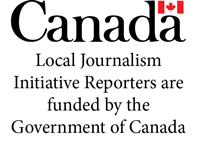I’ve now been through the Netflix series Narcos three times to date. I expect if I make a fourth run through in the future – which I no doubt will – I’ll be near fluent in Spanish. I’d say the production is 90 per cent subtitles, and it just adds more authenticity for me.
I’ve always been interested in the drug war that has been virtually ongoing in Latin America and beyond for the better part of half a century. The most notorious name amongst this particularly ruthless cast of characters tied to the North and South American corridor is easily Pablo Escobar, who is featured through the first two seasons of Narcos. With the more recent exception of Mexico’s El Chapo, no other drug lord in history has been as highly publicized or well documented as the man known as ‘El Padrino’ – ‘The Godfather.’ Much of that interest is likely derived from the fact that his life story is almost unbelievable how it unfolded.
His public exploits and what he was able to build in terms of a cocaine empire from his home city of Medellin, Colombia has never been rivalled. Escobar first established the Medellin Cartel around 45 years ago, essentially providing about 80 per cent of the entire globe’s illegal cocaine market during most of the 1980s. His biggest customer base was in the United States, the primary target for his vast drug export network.
It has been recorded that at the height of its power, the Medellin Cartel secured more than $70 million per day in U.S. currency, amounting to about $26 billion every year. It’s not surprising that the staggering amount of cash changing hands quickly caught the attention of the American government and its various law enforcement agencies, in particular the DEA and the CIA. The U.S. likes to see its money stay closer to home, and the fact that that much was winding up in the coffers of South American drug traffickers was in a word, unacceptable. It would ultimately play a huge role in Escobar’s downfall.
El Padrino’s legacy is particularly murky in his native Colombia and especially his hometown, where he built schools, recreation centres and affordable housing for the poor. Growing up extremely impoverished himself, Escobar sought political office and even had his sicarios (henchmen, more or less) hand out money to large crowds that formed at his public appearances. His ‘Paisa Robin Hood’ image of giving to the poor was also crucial in maintaining the vast network of spies Escobar would later utilize to avoid capture when he went on the run in the early ‘90s.
It is said that Escobar only feared one thing – extradition to the U.S. He went to great lengths to influence the Colombian government to throw out the law that could see him spend the rest of his days in an American prison if ever caught, mostly through bribery, assassination and terrorism. His attempt to murder Colombian presidential hopeful Cesar Gaviria Trujillo in November 1989 largely turned public opinion against him for good when Escobar’s men arranged the bombing of Avianca Flight 203 and over 100 innocent people were killed. Gaviria, a supporter of the extradition of narco-traffickers to the U.S., wound up not taking the flight and survived, and was elected president the following year.
As subsequent political pressure ratcheted up to bring the Medellin Cartel to heel, Escobar responded with more and more acts of terrorism directed at Colombian politicians and police authorities. Whenever this is the case, collateral damage always comes with it and Escobar would become responsible for countless more civilian deaths. Those caught in the crossfire during his war with the government and rival organizations, most notably the Cali Cartel.
With the heat increasing, Escobar agreed to terms of his own surrender in 1991. Most of the agreement was ludicrous, in that he was permitted to construct his own lavish prison, complete with guards that he paid from his own bankroll. It was the price Gaviria paid for the violence to stop, along with having to back the abolishment of the U.S. extradition laws. When it became fairly obvious that Escobar was still operating his cartel from prison, the Colombian government had no choice but to move in and relocate him elsewhere to serve a proper sentence. But the drug lord was able to slip away, and would go underground for the rest of his life.
His cartel dismantled, his beloved family in government custody, and virtually all of his known associates either dead or in prison, Escobar was gunned down by Colombian authorities on a Medellin rooftop a year and a half later at the age of 44. As a testament to that afore-mentioned ‘murky legacy,’ it is reported that 25,000 people still attended his funeral despite his history of extreme violence.
Thanks for reading and I’ll see you back here in a fortnight.
***
This is a bi-weekly opinion column; for question or comment contact Dan McNee at dmcnee@midwesternnewspapers.com.



